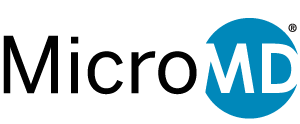Reimbursement may be the most important administrative process in any given medical practice. The reason for this is simple; healthcare organizations are businesses, and just like all other businesses, they need revenue to survive. Unlike other businesses, however, the process by which they obtain that revenue isn’t as simple as collecting payment from the customer. In fact, the RCM process can be accurately referred to as complicated, but that doesn’t mean it’s impossible to navigate successfully. Let’s discuss.
Why is healthcare reimbursement so complicated?
Healthcare reimbursement is not a simple, straightforward process, but multiple processes occurring simultaneously. The main reason for this is that there are a variety of payers that any given billing staff will be working with. Each payer has a different coverage level and varied requirements for documentation, coding, and claims. The billing staff must keep track of all these requirements, being careful to complete each claim correctly, and then monitor for issues that need to be corrected. This creates a complicated and time-consuming process that requires the utmost in attention to complete accurately.
4 Pillars of Healthcare Reimbursement
While the healthcare reimbursement process is detailed and can be complicated, there are four main pillars that, when focused on, can bring some order to the chaos.
- Documentation: Accurate documentation is necessary for an efficient RCM process. In fact, the better your documentation, the less chance you’ll face hassles with your claims processing, and the better chance you’ll receive appropriate reimbursement more quickly. This is because it’s virtually impossible to code properly without thoroughly documenting an encounter. In order to ease the burden of documentation, it’s important to employ a user-friendly EMR in your practice that streamlines the documentation process.
- Coding: Medical coding establishes the correct reimbursement owed to providers for services rendered. There are currently three major coding systems in use: International Classification of Diseases (ICD), which are diagnostic codes, Current Procedural Terminology (CPT), which are procedure codes, and Healthcare Common Procedure Coding System (HCPCS), which are codes that represent procedures, supplies, services, and products. It’s important to use the correct codes so that you’re able to be paid what you deserve, but don’t overcharge. This, again, goes back to the relationship between coding and documentation; without accurate documentation you cannot ensure accurate coding. For this process to be at its most streamlined, it’s important to utilize strong Practice Management software that connects directly to your EMR in order to help with translating your documentation into billing codes.
- Coverage: It’s vital to understand your patients’ coverage prior to providing care so that everyone is informed as to expectations for reimbursement. Providers don’t want to face denied claims and patients don’t want surprise bills. Having the ability to check for prior authorization within your PM software will go a long way to ease the burden of checking coverage and ensure that you don’t stray into territory where reimbursement is going to be too difficult.
- Claims: Claims are where everything comes together and you communicate to the payer what it is you’re owed. Accurate claims are vital to receiving efficient payments; this accuracy doesn’t only refer to the codes you’ve claimed, but also the payer’s requirements for how the claim is filled out and submitted. If thorough, accurate documentation was created, you coded according, and you confirmed coverage, you should be in good shape for swift payment. However, even the most carefully crafted claims are sometimes initially denied. This is a big part of why the reimbursement process can be so complicated; you are required to simultaneously create new claims while monitoring for claims that need to be corrected and resubmitted. A solid clearinghouse that allows for claims scrubbing is integral to streamlining this part of the process and easing some of the burden.
While the reimbursement process can be challenging, by focusing on the four pillars of documentation, coding, coverage, and claims and using the right tech tools, it’s possible to streamline this procedure and make it as stress-free as possible.
At MicroMD, we understand the importance of the RCM process and that’s why we strive to offer tech tools that ease the RCM burden at every stage of the process, from our simple, customizable, and connected MicroMD EMR to our robust MicroMD PM and our preferred clearinghouse partners.
If you’re ready to learn more or get started, visit micromd.com or call 1-800-624-8832.
About the author,
Crystal Stanton
Crystal is a Digital Marketing Specialist at MicroMD. Content creation, social media management, and SEO optimization are just a few of her areas of concentration as she seeks to educate clients and prospects alike about the simple, customizable, and connected solutions we offer at MicroMD.
Looking for PM or EMR Software?
MicroMD PM and EMR/EHR is flexible and can fit almost any specialty. Let us help you get back to the business of healing.









